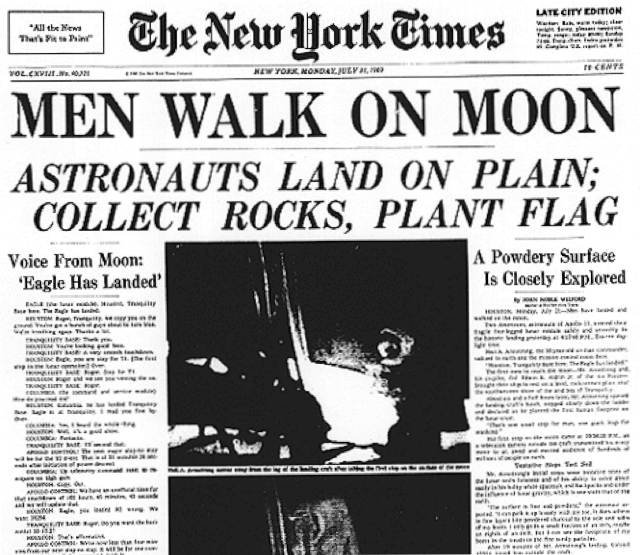Influential NY Times Art Director, Louis Silverstein, Dies At 92
Dec. 2, 2011, 11:46 a.m.
The "godfather" of modern newspaper design, Louis Silverstein, died yesterday at 92.

Silverstein designed this monumental front page
The "godfather" of modern newspaper design, Louis Silverstein, died yesterday at 92. The Brooklyn native who went to Pratt joined the NY Times in its promotion department in 1952; the NY Times obituary says, "Mr. Silverstein made an early foray into newspaper design in 1967, when he effected the first change in The Times’s typeface in a quarter-century, shifting from 8-point Ideal to 8 1/2-point Imperial. This was the year he enlarged and sharpened the front page logotype and dropped the period. (Its removal saved the paper $45 a year in ink.)... In 1976, he helped devise a bigger, more visually expansive and, to many, more appealing New York Times (retaining the 'The' it had since acquired). It was a rethinking of the paper that was as important to its future then as the Internet is today, and one that influenced newspaper design nationwide."
Silverstein, who was hailed as influencing newspapers' current design in a 1984 survey, was also responsible for "engineering" the Times' move from eight columns to six columns and designed front pages like the moon landing. Former Times art director Steve Heller wrote in PrintMag, "He introduced white space to the Times. He conceived of using allegorical and metaphorical art, rather than editorial cartoons, on the OpEd page. He ushered in the multi-section newspaper and designed them like magazines. He perfected conceptual data-graphics (or what he called 'sides of beef') prefiguring information graphics. He brought the 'Old Grey Lady' out of the 19th Century."
As for new sections, of course, there were critics to his changes. According to the Times, "Traditionalists complained that the snappy new 'soft news' sections devoured newsprint that might have been given over to 'hard news.' They joked that the paper was going to unveil another new section and call it 'News.'"